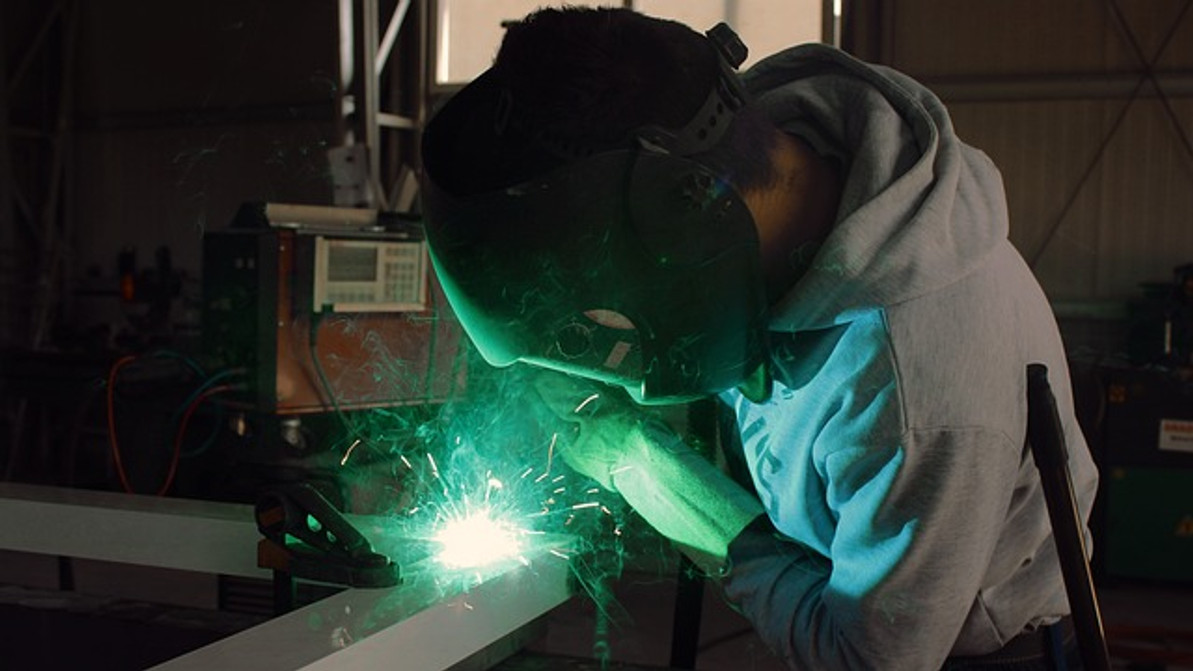What's the Difference Between Welding and Soldering
The terms "welding" and "soldering" are often used interchangeably. They are processes that involve joining two or more metal workpieces with heat. Welding and soldering, however, aren't the same. While they both use heat -- and they are both used to join multiple metal workpieces -- they differ in several ways.
What Is Welding?
Welding is the process of joining multiple metal workpieces via fusion. All metals, as well as alloys, will eventually melt when exposed to enough heat. Welding capitalizes on this characterized by using heat to join multiple metal workpieces.
Using a welding torch, you can expose metal workpieces to heat. The surfaces exposed to the welding torch's heat will begin to melt and mix together. As the surfaces cool, the molten metal will solidify while fusing the metal workpieces together.
What Is Soldering?
Soldering is the process of joining multiple metal workpieces via solder. Solder is a metal alloy that's used in soldering. There's lead-based solder, lead-free solder and flux-based solder, all of which are used in soldering.
You can melt solder to join two or more metal workpieces. Whether it's lead-based, lead-free or flux-based, solder has a low melting point. When exposed to heat, it will melt. Placing the solder between two or more workpieces and then melting it will join those workpieces. The workpieces won't necessarily melt. Rather, the solder will melt, and it will join the workpieces after cooling and hardening.
Differences Between Welding and Soldering
You can join multiple metal workpieces by welding or soldering them. Welding is a fusion-based process for joining metal workpieces. It involves the use of a welding torch to melt the surfaces of the workpieces.
Soldering is a non-fusion-based process for joining metal workpieces. Soldering requires the use of solder. Exposing the solder to heat will melt it and, thus, join the metal workpieces.
Welding is stronger than soldering. Metal workpieces that are welded together are less likely to come apart than those that are soldered together. For super-strong joints, there's no substitution for welding.
Soldering, on the other hand, is an easier and simpler method of joining multiple metal workpieces. You'll still need a soldering iron and solder, but you won't need any expensive equipment. Welding, conversely, requires a welding torch, eye protection, hand protection and other equipment.
There are other differences between welding and soldering. Nonetheless, they are two different processes that involve different steps to join multiple metal workpieces. Welding leverages fusion, whereas soldering leverages a metal alloy substance known as solder.
Recent Posts
-
Fire Safety in the Workplace: What You Need to Know
What steps are you taking to prevent fires in your workplace? According to the U.S. Occupational Saf …Aug 23rd 2023 -
Is It Safe to Go Jogging With a Cold Infection?
If you're suffering from a cold infection, you might be wondering whether it's safe to go jogging. T …Aug 22nd 2023 -
5 Safety Tips to Follow When Using a Powder-Actuated Tool
Powder-actuated tools are commonly used to join materials to steel and concrete. Also known as Hilti …Aug 20th 2023




